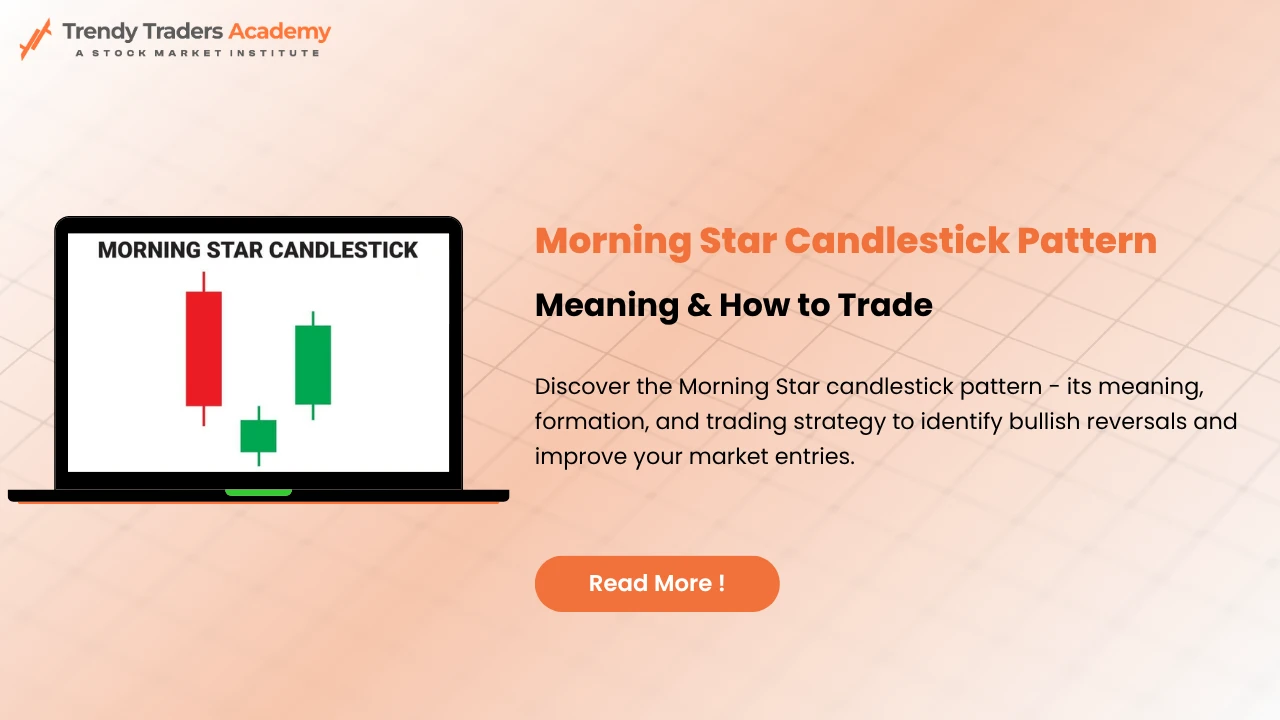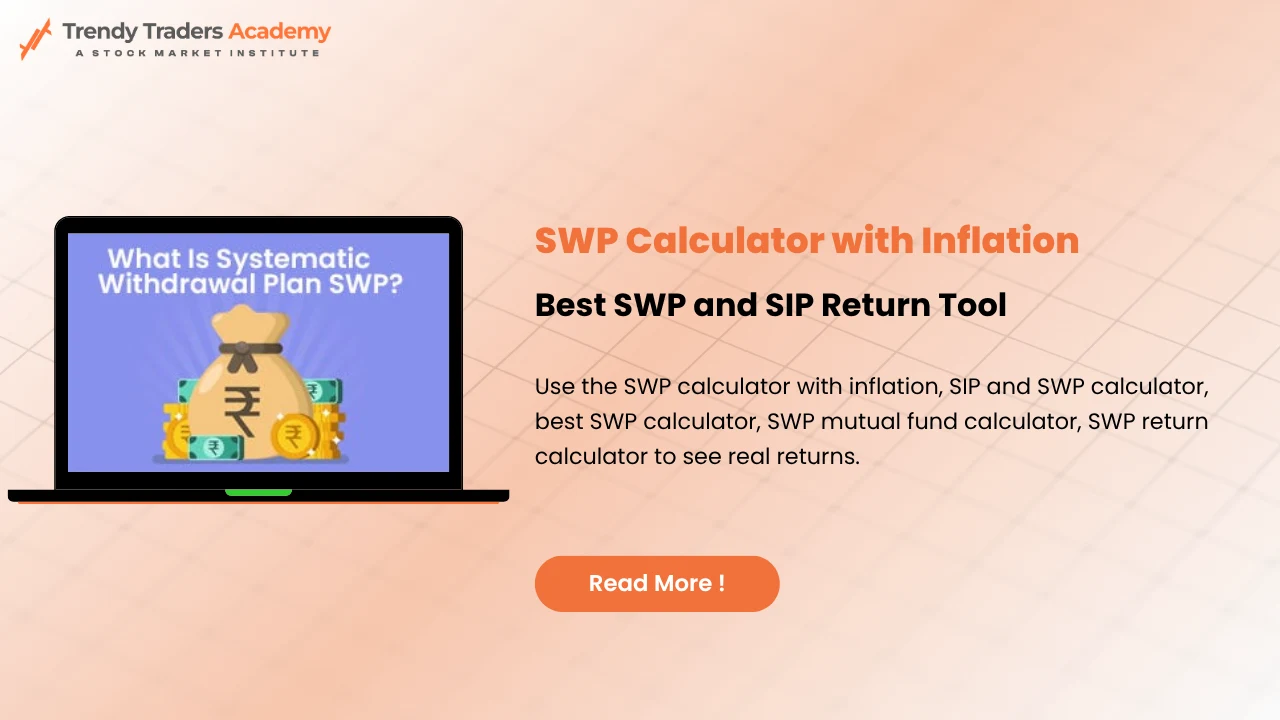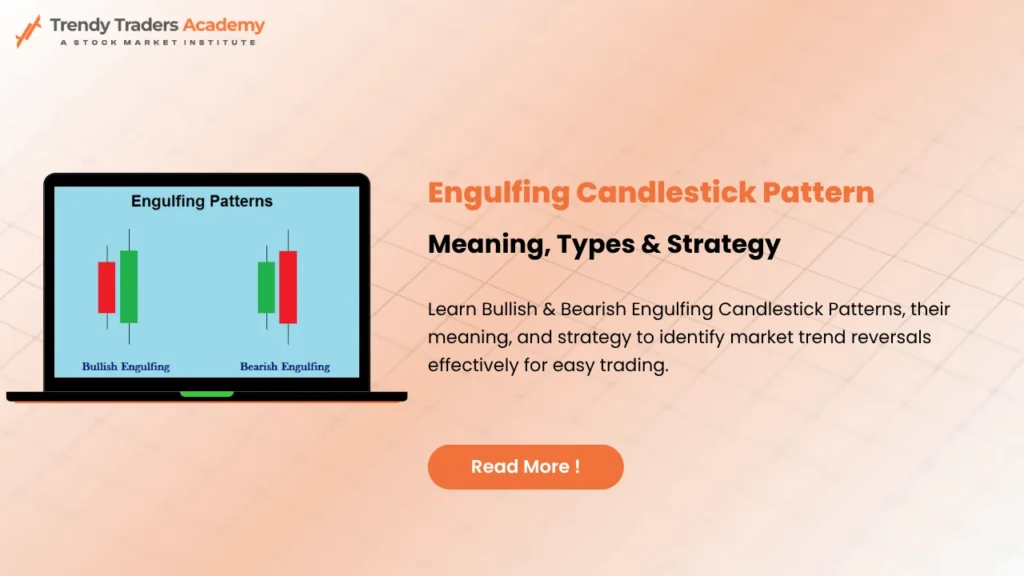
Engulfing Candlestick Pattern: Meaning, Types & Strategy
In trading, price action often tells a story – and few patterns tell it better than the engulfing candlestick pattern. Engulfing patterns consist of two candlesticks that signal to traders when momentum might be changing direction and a trend may soon reverse.
To prepare traders and investors for upcoming shifts in price action, bullish engulfing and bearish engulfing patterns can be identified across all asset classes, including stocks, forex, and cryptocurrency.
This blog will explain everything you need to know about identifying and trading engulfing patterns, including their recognition, psychology, applicability to real-life trading strategies, and frequently asked questions.
What Is an Engulfing Candlestick Pattern?
An engulfing candlestick pattern occurs when an overall larger candlestick fully engulfs the body of the preceding candlestick, signaling a reversal of the previous trend with buyers potentially overtaking sellers’ response.
Bullish and bearish engulfing charts can equip traders and investors with the likely fluctuations in the price action in all the asset types, such as stocks, forex and even cryptocurrency.
You will come to know all you might need to know about the identifications of engulfing patterns, the identification of the pattern, psychology of the pattern, how it can be applied in trading strategy and common questions.
It has two candles:
- The first candle represents the current trend losing strength.
- The second candle engulfs the first, showing a decisive momentum shift.
This visual “takeover” is what makes engulfing patterns powerful for spotting turning points on charts.
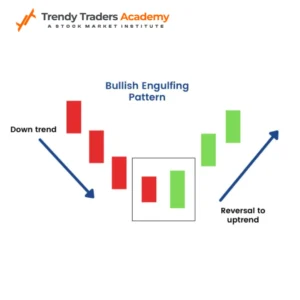
Bullish Engulfing Pattern - Buyers Take Charge
A bullish engulfing pattern when formed after a downtrend indicates the shift of dominance from sellers to buyers hinting a potential bullish reversal.
Key Features
Aspect | Description |
Market Context | Appears after a decline |
Candle 1 | Small red (bearish) candle |
Candle 2 | Large green (bullish) candle that fully covers the first |
Indication | Strong shift from sellers to buyers |
Confirmation | Price closes above the engulfing candle’s high |
How to Recognize It
- Identify a clear downtrend or declining momentum.
- Spot a small red candle followed by a large green candle.
- The green candles should completely engulf the red candle.
- Always wait for a confirmation before taking the entry.
Why It Works
When a strong green candle consumes the previous red candle, it shows that buyers have regained control – often marking the end of a downtrend and a possible bullish reversal.
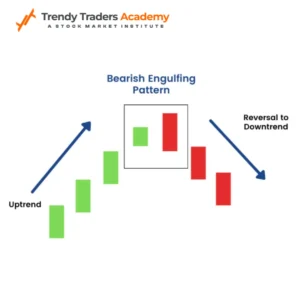
Bearish Engulfing Pattern - Sellers Regain Control
A bearish engulfing candlestick pattern develops at the top of an uptrend and signals a potential reversal from uptrend to downtrend.
Key Features
Aspect | Description |
Market Context | Appears after an uptrend |
Candle 1 | Small green (bullish) candle |
Candle 2 | Large red (bearish) candle engulfing the first |
Indication | Shift from buyers to sellers |
Confirmation | Price closes below the engulfing candle’s low |
How to Recognize It
- Look for a consistent uptrend.
- Find a small green candle followed by a large red candle.
- The red candle’s body should completely cover the green one.
- Wait for the next candle to close lower for confirmation.
Why It Works
The pattern works most of the time because it indicates the transfer of strength / dominance of buyers to sells indicating a reversal.
Engulfing Candlestick Pattern vs Others
Pattern | Type | No. of Candles | Strength | Common Error |
Engulfing | Reversal | 2 | High | Trading without confirmation |
Doji | Indecision | 1 | Medium | Misreading trend context |
Hammer / Shooting Star | Reversal | 1 | Moderate | Ignoring support/resistance |
Morning/Evening Star | Reversal | 3 | High | Entering late |
Step by Step Guide to trade engulfing patterns
- Identify the trend: Up or Down, never go against the trend.
- Wait for engulfing formation – Ensure the second candle fully covers the first.
- Confirm the reversal – Use volume, RSI, or moving averages for added confidence.
- Enter the trade – For bullish engulfing, buy above the engulfing candle’s high. For bearish engulfing, sell below the engulfing candle’s low.
- Set stop-loss – Place it beyond the opposite side of the engulfing candle.
- Book profits – Use the next resistance/support or a 2:1 reward ratio.
Psychology Behind Engulfing Patterns
The engulfing patterns are strong because of market psychology:
- In bullish engulfing, the sellers drive the price downwards, and then they are overwhelmed by buyers – forming a huge green candle.
- In a bearish engulfing, the sellers retaliate stronger by pushing the prices up and the buyers are no exception as they surround the former candle.
These mood swings between customers and vendors are turning points in moods.
When to Avoid Engulfing Trades
- During choppy or range-bound markets.
- When the pattern forms near major news events.
- Without confirmation from volume or trend indicators.
- In low liquidity sessions like pre-market or late trading hours.
Engulfing Patterns and AI-Based Trading
Modern AI-driven trading models (like Google’s BERT or MUM-inspired systems) analyze chart patterns contextually – not just by shape, but by sentiment and market structure.
By training algorithms on engulfing formations, traders can detect hidden reversal signals faster and reduce emotional decision-making.
How to increase the accuracy of an engulfing pattern?
The art of placing the right stop loss: The common mistake that a new trader makes here is that they set the low of the engulfing candle as their stop loss but the right way to do it is leaving a little buffer and putting the stop loss slightly below the engulfing candle’s low or high or near the recent swing high or swing low as there are high chances that the candle price will retest the low of candle and shoot up from there after hitting your stoploss.
Wait for Double Confirmation: Most of the traders make this mistake of entering into the trade as soon as the engulfing candle is formed but the ideal way would be to wait for one more green (for bullish engulfing) or red (for bearish candlestick patterns) to be formed above (for bullish engulfing) / below (Bearish engulfing) the candle and then enter the trade. It will help you to eliminate the fake reversals.
Wait for the closing : In case of engulfing patterns, this is a very common mistake made by new Traders that they enter into the trade without waiting for candle closing, and later end up into losses So it’s a great way to reduce your number of trade, hitting stoploss and increasing your accuracy.
Trail your profits : For engulfing patterns or for any bullish candlestick patterns, it is very essential for all traders to preserve their profits. You would have often seen that you spotted the right patterns entered at the right time, but the stock didn’t hit your target and reversed midway and ended up hitting your stop loss. The ideal way to take the trade ahead is to trail your profits that is as soon as you reach the risk reward of 1:1 move your stop loss to the 1:1 level and move your targets to the next swing high or swing low.
Conclusion
One of the most dependable indicators for identifying market reversals is the engulfing candlestick . The parameters you should consider are context, confirmation, and consistency. Then feel confident to let engulfing patterns guide your entry point.
By gaining an understanding of their psychology and confirmation methods, you can increase your probability of trading in the correct direction, whether you are looking for bearish engulfing after a rally or looking for bullish engulfing after a downtrend.
FAQ'S
What does an engulffing pattern actually signify?
It’s a combination of two different candlestick patterns where the second candle completely covers the first candle which might lead to a potential reversal.
When is a bullish engulfing pattern more reliable?
When it appears after a clear downtrend and is supported by high trading volume.
How reliable are bearish candlestick patterns?
Yes it is, but the accuracy of bearish engulfing will always be higher if it is formed in a downtrend
Do engulfing patterns work on all timeframes?
Yes. They’re effective from 1-minute intraday charts to weekly or monthly charts.
Can I trade engulfing patterns alone?
It’s safer to combine them with trend indicators or support/resistance analysis.
What is the difference between bullish and bearish engulfing patterns?
The difference between bullish and bearish engulfing is primarily just that bullish engulfing is to indicate potential bullish reversal while bearish engulfing indicates potential reversal from top to bearish.






